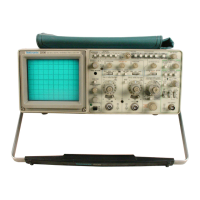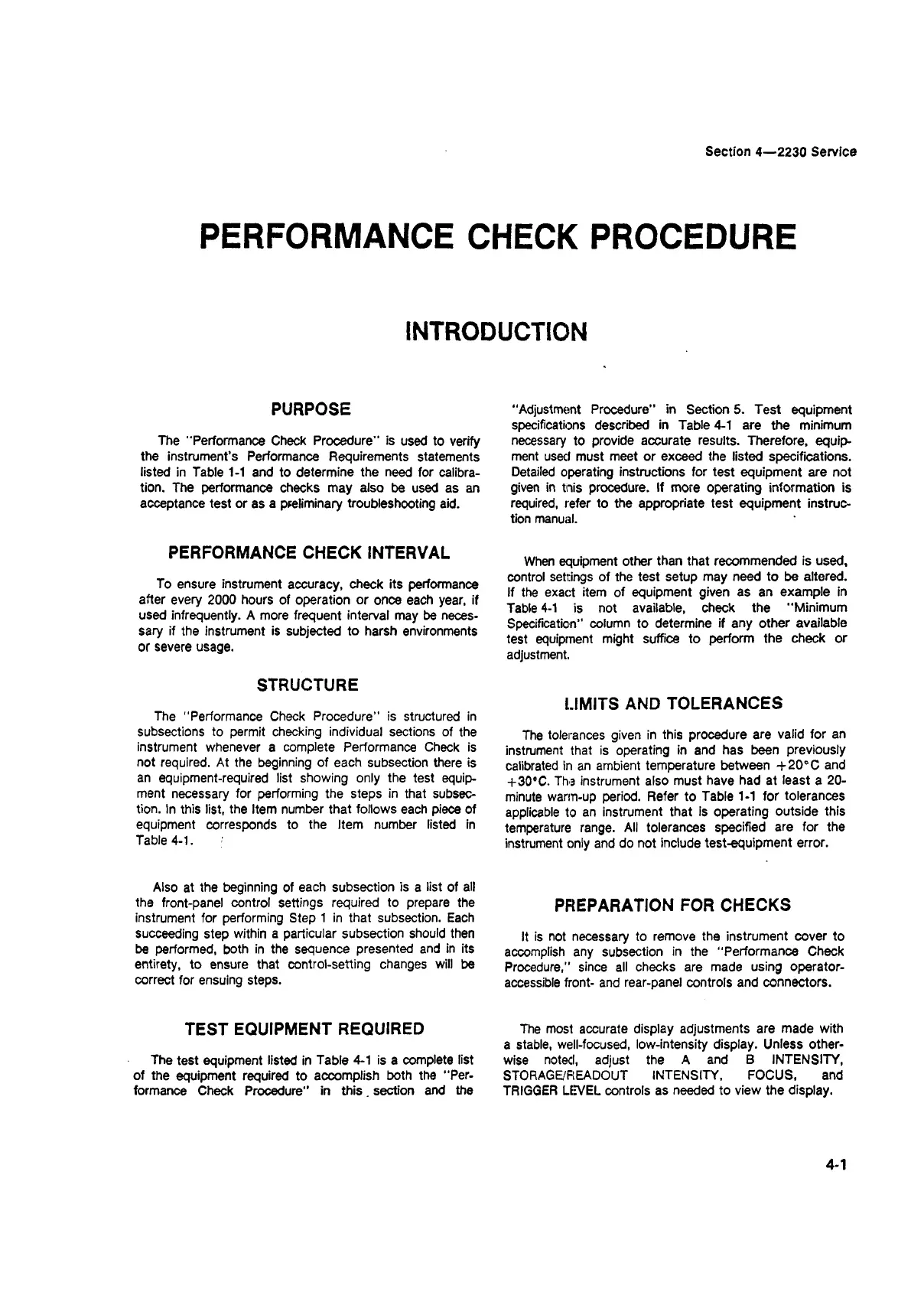Section 4—2230 Service
PERFORMANCE CHECK PROCEDURE
INTRODUCTION
PURPOSE
The “Performance Check Procedure” is used to verify
the instrument’s Performance Requirements statements
listed in Table 1-1 and to determine the need for calibra
tion. The performance checks may also be used as an
acceptance test or as a preliminary troubleshooting aid.
PERFORMANCE CHECK INTERVAL
To ensure instrument accuracy, check its performance
after every 2000 hours of operation or once each year, if
used infrequently. A more frequent interval may be neces
sary if the instrument is subjected to harsh environments
or severe usage.
STRUCTURE
The "Performance Check Procedure” is structured in
subsections to permit checking individual sections of the
instrument whenever a complete Performance Check is
not required. At the beginning of each subsection there is
an equipment-required list showing only the test equip
ment necessary for performing the steps in that subsec
tion. In this list, the Item number that follows each piece of
equipment corresponds to the Item number listed in
Table 4-1.
Also at the beginning of each subsection is a list of all
the front-panel control settings required to prepare the
instrument for performing Step 1 in that subsection. Each
succeeding step within a particular subsection should then
be performed, both in the sequence presented and in its
entirety, to ensure that control-setting changes will be
correct for ensuing steps.
TEST EQUIPMENT REQUIRED
The test equipment listed in Table 4-1 is a complete list
of the equipment required to accomplish both the "Per
formance Check Procedure" in this. section and the
"Adjustment Procedure” in Section 5. Test equipment
specifications described in Table 4-1 are the minimum
necessary to provide accurate results. Therefore, equip
ment used must meet or exceed the listed specifications.
Detailed operating instructions for test equipment are not
given in this procedure. If more operating information is
required, refer to the appropriate test equipment instruc
tion manual.
When equipment other than that recommended is used,
control settings of the test setup may need to be altered.
If the exact item of equipment given as an example in
Table 4-1 is not available, check the “ Minimum
Specification” column to determine if any other available
test equipment might suffice to perform the check or
adjustment.
LIMITS AND TOLERANCES
The tolerances given in this procedure are valid for an
instrument that is operating in and has been previously
calibrated in an ambient temperature between +20°C and
+30eC. The instrument also must have had at least a 20-
minute warm-up period. Refer to Table 1-1 for tolerances
applicable to an instrument that is operating outside this
temperature range. All tolerances specified are for the
instrument only and do not include test-equipment error.
PREPARATION FOR CHECKS
It is not necessary to remove the instrument cover to
accomplish any subsection in the "Performance Check
Procedure," since all checks are made using operator-
accessible front- and rear-panel controls and connectors.
The most accurate display adjustments are made with
a stable, well-focused, low-intensity display. Unless other
wise noted, adjust the A and B INTENSITY,
STORAGE/READOUT INTENSITY, FOCUS, and
TRIGGER LE-VEL controls as needed to view the display.
4-1

